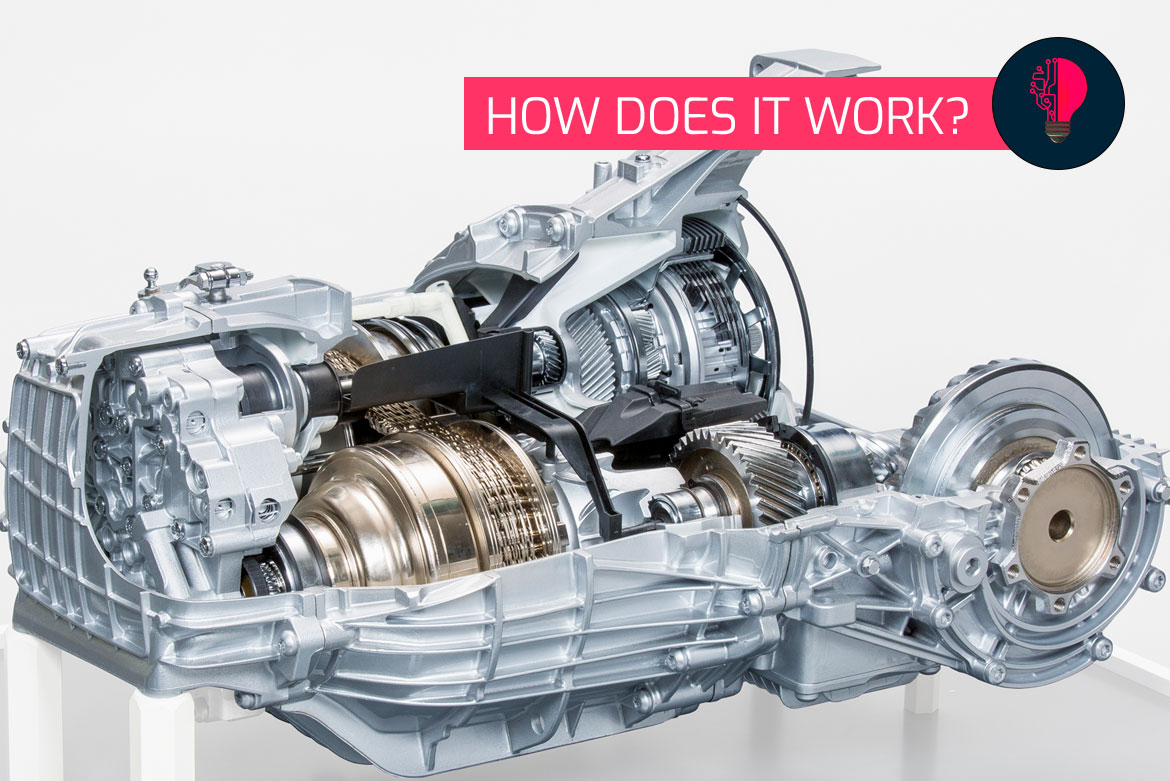5 Simple Statements About gearbox cvt Explained
5 Simple Statements About gearbox cvt Explained
Blog Article

A Continually Variable Transmission (CVT) is actually a type of automated transmission which will seamlessly improve through a ongoing array of effective equipment ratios. It doesn't have preset gears like a standard computerized or guide transmission.
Ratcheting CVTs can transfer considerable torque due to the fact their static friction basically boosts relative to torque throughput, so slippage is unattainable in adequately designed programs. Efficiency is mostly significant simply because the majority of the dynamic friction is due to extremely slight transitional clutch speed variations.
The pulley system within a CVT includes two pulleys, one particular connected to the motor and another to the transmission. The two pulleys are connected by a belt or chain. The pulleys are shaped like cones, and their diameters might be adjusted to alter the equipment ratio.
Carfax says some motorists report this sensation results in a disengaging driving practical experience. Other CVT Downsides contain louder-than-normal acceleration, rather high priced CVT fluid, and likely costlier repairs. In addition, a guide or automated transmission is a lot more fascinating for major towing or greater overall performance.
A continuously variable transmission within a car or truck senses the accelerator input with engine load and obtain shifted to the specified speed or torque gear ratio instantly, in other words we will declare that a cvt transmission is probably the most straightforward kinds of automated transmission that gives continual uninterrupted energy in a specified number of velocity and torque ratios.
com for an automotive knowledge that will gas your passion and empower you for making the very best selections for the autos. Let's rev up the engines and embark on this thrilling automotive journey collectively!
All three of the earlier claims, which concerned the next Nissan autos, resulted in class action settlements.
The 1965 Wheel Horse 875 and 1075 back garden tractors were the primary these types of vehicles for being equipped that has a hydrostatic CVT. The look used a variable-displacement swash-plate pump and fixed-displacement gear-form hydraulic motor put together into a single compact package deal. Reverse ratios were accomplished by reversing the circulation on the pump by around-centering of the swashplate.
Learning how Each individual technique works may possibly assist you end up picking the best option. Dive into the main points, and you’ll learn why you may perhaps favor the eCVT in hybrid autos around a traditional CVT. Your option could improve your driving pleasure.
A consistently variable transmission (CVT) is an gearbox cvt automatic transmission that will alter via a ongoing array of gear ratios, commonly leading to better gasoline overall economy in gasoline programs.
CVTs have existed for decades, however they gained acceptance recently as a result of advancements in technology and engineering, specifically in raising trustworthiness. The use of CVT has expanded in many compact and hybrid vehicles. Then again, eCVTs emerged a lot more not long ago to be a Element of the electrification of motor vehicles.
Whenever you phase over the gas pedal of a vehicle that has a continuously variable transmission, you recognize the real difference straight away. The engine revs up toward the rpms at which it generates the most energy, after which it stays there. Although the motor vehicle doesn't react instantly. Then, a second later on, the transmission kicks in, accelerating the car bit by bit, steadily and with none shifts.
Though this type of program appears dramatically distinct, each of the elements are analogous to a belt-and-pulley system and lead to the same results -- a consistently variable transmission. Here's how it really works:
In contrast, number of hydrostatic transmission units attain a lot more than about sixty five p.c efficiency. This is due to a combination of inside losses during the pump and motor(s), and losses within the piping and valves.